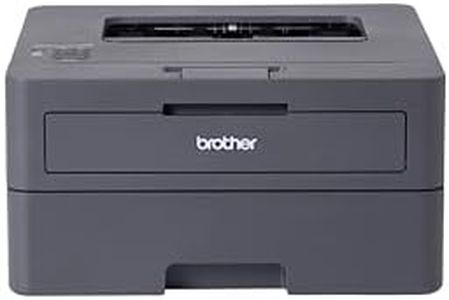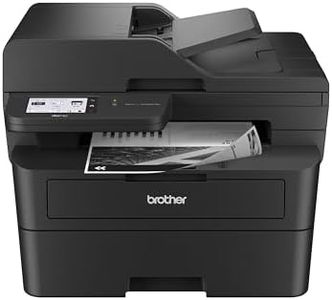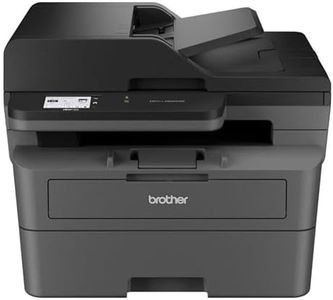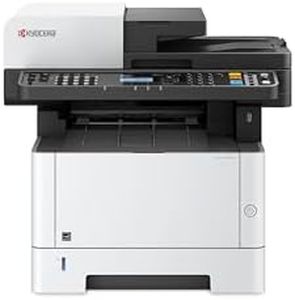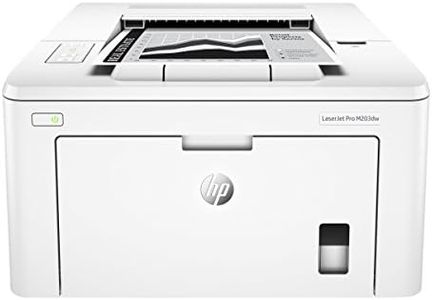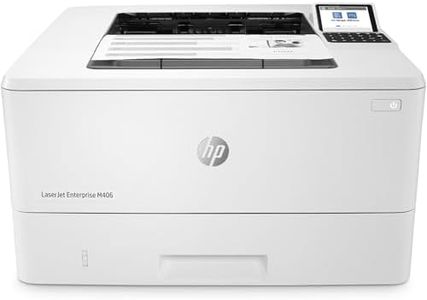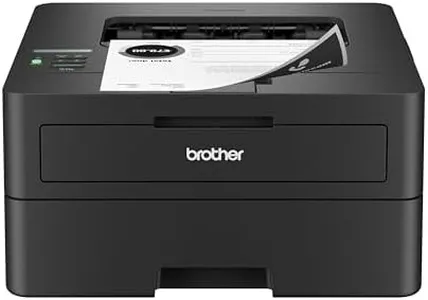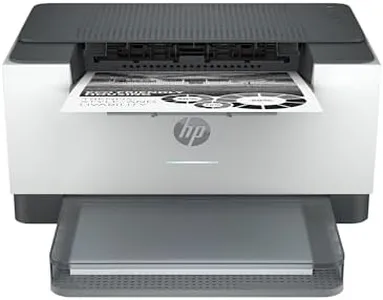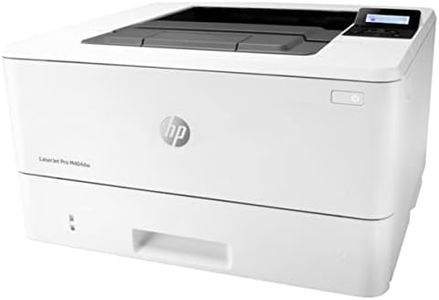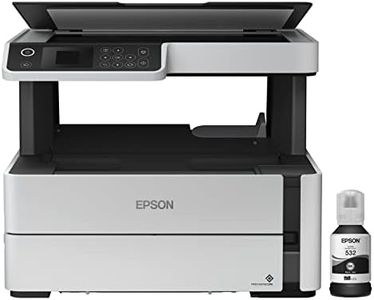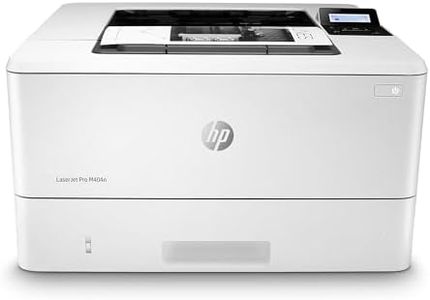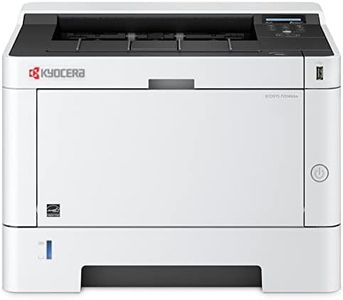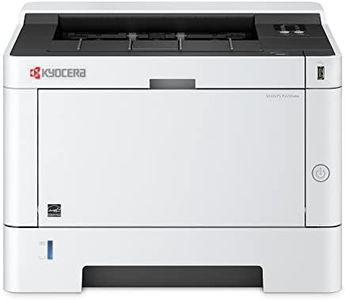We Use CookiesWe use cookies to enhance the security, performance,
functionality and for analytical and promotional activities. By continuing to browse this site you
are agreeing to our privacy policy
10 Best Monochrome Printer
From leading brands and best sellers available on the web.Buying Guide for the Best Monochrome Printer
Choosing a monochrome printer means you’re focusing on efficiency and printing only in black and white, which is ideal for text documents, reports, and forms. To pick the right one, think about how often you print, the type of documents you handle, and the space available for the printer in your home or office. Understanding the key specifications will help you balance speed, convenience, and long-term reliability to get the best fit for your needs.Print Speed (Pages Per Minute - PPM)Print speed, measured in pages per minute (PPM), tells you how many sheets the printer can produce in a minute. This impacts how fast you can finish your printing tasks, especially if you print in batches. Speeds below 20 PPM are slower and suit personal or occasional use, 20-30 PPM fits most small offices or regular home use, while 30+ PPM is better for heavy or frequent printing. If you regularly print large documents or share the printer with others, higher speeds will save you time. If your use is light, a moderate speed will likely meet your needs.
Print ResolutionPrint resolution, often shown as dots per inch (DPI), defines how sharp and clear your printed text or images will appear. Lower DPI (around 600 x 600) is enough for basic text, while higher DPI (1200 x 1200 or above) produces crisper text and better detail, which can matter for presentations or documents with small fonts. If your printing is mostly plain text, basic resolution is fine, but if clarity is crucial, especially for professional-looking documents or charts, aim for a higher DPI.
Connectivity OptionsConnectivity refers to how the printer links to your devices. Common options include USB, Ethernet (wired networking), and wireless (Wi-Fi or Bluetooth). USB suits single-user, direct connections. Ethernet is best for offices with fixed networks, allowing multiple users to share the printer. Wireless options let you print from anywhere on the same network, ideal if you want to print from laptops or mobile devices. Choose based on your environment: for shared or flexible workplaces, network and wireless features can boost convenience.
Duty CycleDuty cycle indicates the maximum number of pages a printer is designed to handle per month without risk of excessive wear. Printers with a duty cycle below 2,000 pages work for light personal or home office use, 2,000-10,000 cover most small to medium offices, while higher figures serve large teams or heavy workflows. Match the printer’s duty cycle to your monthly print volume to ensure reliability and longevity.
Paper Handling (Input/Output Capacity)Paper handling relates to how many sheets the printer can hold and output at once. Smaller trays (100-250 sheets) mean more frequent refilling, suitable for personal or occasional use. Larger trays (250-500+) support busy offices or users who want to reload less often. If you print in high volumes or need to use different paper sizes, look for a printer with expansion options or multiple trays.
Duplex Printing (Automatic Double-Sided Printing)Duplex printing means the printer can automatically print on both sides of the paper. This saves time and reduces paper usage, which is both eco-friendly and cost-effective. If you often handle large documents, want to save paper, or just like the convenience, duplex is a helpful feature. For only occasional printing, manual flipping may be sufficient.
Size and FootprintThe size and footprint refer to how much physical space the printer occupies. Compact printers are easier to fit on a desk or in a small home office, while larger models may offer more features or paper capacity but require more room. Consider the available space where you plan to keep the printer, and ensure the model you select will fit comfortably and leave enough room for easy access.
Toner Cartridge YieldToner cartridge yield tells you how many pages a single cartridge can print before it needs replacing. Higher yields mean less frequent changes and more convenience, especially in high-use environments. Standard yields suit light users, while high-yield cartridges are more efficient for users with frequent or bulk printing needs. Check how your print volume matches up to the available cartridge options to ensure you’re not constantly replacing toner.
